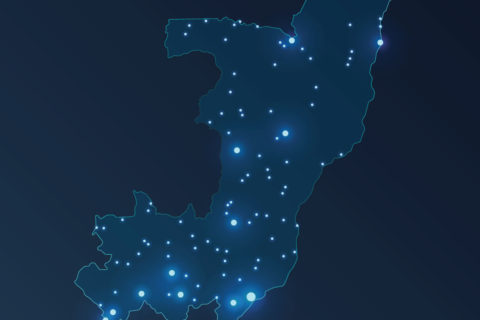In part 1, we discussed how F1 used sensor technology as we sought to enhance the F1 fan experience.
Today, in part 2, we look at the results:
- There’s a significant difference in fan behaviour at European and Middle Eastern races. The latter tend to be more family centric with high usage and dwell time at family/kids activations. In fact, we found that in Bahrain, 30% of attendees preferred to remain in the Fanzone to enjoy these activations than watching any of the race on the Sunday. European fans tend to be more F1 and race focussed. 1/3 will spend 3 hours+ in their grandstand seats – significantly more time than their Middle Eastern counterparts
- 1 in 5 attendees at the US Grand Prix were ‘concert’ only spectators, coming specifically for the Britney Spears and Bruno Mars conferences and not watching any F1 action. This represents an opportunity for F1 to sell more specific music/F1 merchandise and better inform event attendees about the F1 events earlier in the day to try and convert these non-fans to F1 fans
- At many races, most attendees enter via 2 or 3 gates. Consequently, it’s key to ensure these gates have ample food, drink and merchandise stands – not always the case. Spain is a perfect example of this. 50% of attendees enter through gates 6 and 7. However, the merchandise megastore is located a 20min walk away in the Fanzone at gate 1. Many of these fans are unlikely to even know about the store. Therefore, it’s key to move the megastore to where the higher volume of fans are, or better inform fans entering through this gate about the benefits of attending the Fanzone
- Some circuits see low visitor numbers for the Fanzone and main merchandise store. This suggests that either they are in the wrong location, or multiple Fanzones/merchandise stores are needed at the bigger circuits where fans are less likely to see them. For example:
- Azerbaijan – only 9% visited the Fanzone and 38% visited a merchandise store
- Belgium – 46% visited the Fanzone and 80% visited a merchandise store
- E-sports/F1 simulators are very popular at F1 races and there’s a significant link between usage of these and higher value for money perceptions (which is more likely to drive repeat visits). We need to ensure that there are opportunities for fans to take part in these activations across the circuit (currently they are centralised in the Fanzone). This will help drive perceptions of value and improve the fan experience
- Most (approx. 3/4) fans remain in the area of the circuit where they entered and are unlikely to walk around and explore all areas of the venue. Only ¼ visit more than 1 zone across the race weekend. This has huge implications for F1 as we traditionally had one merchandise megastore and one Fanzone with activations, assuming that fans would move to these areas. As fans don’t move around, F1 has amended its strategy and take merchandise/fan activations (simulators, pit stop demos etc) to the fans by having more stands/activations scattered around the circuit, rather than assuming fans will walk the often-long journeys to find these areas. Our spectator research shows that the more fans engage with the different activations around the circuit, the greater their value for money perceptions are and therefore the greater likelihood of them buying a ticket for the following year
- Only 1/3 of guests in F1 Paddock Club hospitality were also seen at any F1 merchandise stand or the megastore. Given the purchasing power of these guests, this is a missed opportunity and has led to a change of strategy around F1 merchandise locations
The above is just a snapshot of our key findings and resultant strategic changes. We’ve also:
- Launched the F1 Grand Prix event app to improve wayfinding and information for fans at races
- Re-considered our strategy around the location of merchandise and Fanzone activations (like E-sports)
The work we are doing here is paying dividends for F1:
- Race enjoyment (‘very enjoyable’) increased by 3% from 73% in 2017 to 76% in 2019
- Satisfaction (‘very satisfied’) with ‘information/signage’ at races increased by 30% from 13% in 2017 to 43% in 2019
- Perceptions of ‘good value for money’ have increased 3% from 62% in 2017 to 65% in 2019
F1 are delighted with the work we’re doing in this space. We’re also pleased to see that other sports and entertainment events are doing more of this kind of work to understand how their fans behave at their events. Fans are central to any event, and work like the above ensures:
a) fans have the best experience
b) events are maximising their commercial potential
I expect more sports rights holders to come on board with similar projects and look forward to seeing the changes first hand when I visit more sports events with my family in the future!


